Mixborder along a fence of flowers and conifers
A personal plot is not only a place for recreation, but also a field of work for a florist. Every self-respecting gardener wants to have an excellent flower bed. But not an ordinary front garden of the same type of flowers, but so that different types of plants are combined in it: from undersized to tall, from blooming in spring and autumn. Such an interesting combination can be recreated by a mixborder.
Content:
- Mixborder - what is it?
- Some recommendations for forming a mixborder
- Site and soil preparation
- Mixborder types
- Mixborder of flowers
- Coniferous mixborder
Mixborder - what is it?
Mixborder is the most common species composition of flower beds. They are placed everywhere: in garden plots, in parks, on alleys, on viewing platforms. Various plants are involved in the arrangement: annuals or perennials, shrubs or trees, root or bulbous. It is also possible to arrange inanimate figures of gnomes, mushrooms and similar garden paraphernalia.
The budding gardener will initially plant flowers in a small strip, usually in a curb bed. Most often, at the beginning of his work, the florist experiments with monotonous annual flowers. However, this quickly gets boring, you want variety and variegation throughout the entire flowering period of plants - from early spring to late autumn. A similar mix of flowering shrubs, trees, and beautiful conifers is called a mixborder. Due to the periodic change in flowering, first some types of flowers, then others, the flower bed plays with different colors from May to the end of October.
If coniferous specimens are additionally planted in the flowerbed, then the original border will delight with its color for a whole year.
It is necessary to create a mixborder in such a way as to leave the basic principle of placement and composition of flowering shrubs. For this purpose, you need a border or flower bed next to the fence. The width of the front garden should not be less than 1.5 meters, but at the same time not exceed 4 meters. This is especially true for placing a flower bed under a fence or wall.
Flowers are planted in small groups, so that the tallest are behind and the lower ones are in front. It is necessary to pick up the shrubs so that they look like a ladder. But the main factor of a mixborder is continuous flowering.
Some recommendations for forming a mixborder
If we take as a basis that the front garden will be located near the fence (one-sided), then the approximate arrangement of the composition is possible:
- Bulbous (tulips, daffodils) - they bloom in early spring - late March, early April. When the weather is suitable for them, they are able to bloom until May, given that they come in different periods of bud formation.
- The middle can contain a ton of options. Lilies are the first to bloom after the bulbous, they are not only divided into high and low, but also according to the shape and size of the buds. Their period of rampage falls in mid-May - until the end of July.
- The perimeter in front of the fence wall can be planted with tall perennials - these include Cannes... Beautiful tall shrubs that boast not only their gorgeous growth, abundant flowering, but also lush glossy leaves.
- In the case of a double-sided mixborder, the highest point of the flower bed should be in the middle, and various trees and shrubs are distributed from it in different directions in decreasing growth.
- It is worth considering that viewing the composition has the most advantageous angle from a certain distance. Therefore, experienced gardeners use a distance maneuver and place a small lawn of grass in front of the flower bed, no more than 1.5 meters wide.
- It is imperative to distinguish between the main lawn and the composition. For this, various decorative fences are used. Now they can look quite original if they are based on design developments. Or opt for a long-proven method - a lined border with brickwork. You can also take advantage of the natural decor in the form of stones or a wooden fence.
The main thing, when growing shrubs, is to take into account their branching. After growing, plants are able to shade each other and contribute to the cessation of flowering. Which has a completely opposite effect that was required to be achieved in the beginning.
Site and soil preparation
Before you start forming an interesting phased front garden, you should think about its placement. For this, some aspects must be taken into account:
- Where would I like to place the flower bed.
- What are the placement conditions - a shaded area or an open space above the scorching sun.
- Consider plants that can be located in a certain area - those that tend to grow in the shade or those that definitely need an abundance of sunlight.
- Will trees and shrubs fit in the selected area of various heights.
When choosing a site, one should not forget that the task of a mixborder is to decorate, which means that it must be placed in a conspicuous place, and not in a quiet nook. It is imperative that when planting various kinds of grasses and shrubs, you need to pay attention to their relationship to the soil. Some can grow in any soil, while others require a certain acidity or composition.
The distance from home should not be neglected either. If the planted area is located not far from residential buildings, then it is not recommended to plant flowers in the soil that attract bees and wasps. They tend to bite, especially for young children who are so eagerly trying to catch them.
An important aspect in the formation of a flower bed is soil preparation.
The first step is to carefully dig it up, stretching the shovel blade as deep as possible deep into the ground. Do not be lazy - be sure to break up large pieces of soil, they may contain weed rhizomes. If necessary, you need to deacidify the soil. At the same time, with a clay substrate, it is advisable to supplement it with peat and sand.
If desired, you can completely remove the entire top layer to a depth of 15-20 cm and start a new loose, airy and nutritious soil. Each of the options has its own advantages and disadvantages. You should only choose a gardener yourself.
Mixborder types
According to the classification, mixborders are different. They are divided not only by the type of flowering and timing, but also by their appearance:
- Shrub - ideally located near the walls of buildings, by the fence. Originally flowering shrubs present an interesting combination of colors and germination patterns. Ornamental shrubs can be arranged, which are formed by cutting according to your own taste.
- Coniferous - their advantage is the lack of special care, low cost and evergreen covers. Ideal representatives: juniper, dwarf cedar, Japanese tuevik, fir.
- Floral is the most demanding option for creating an excellent flower bed. When it is formed, it is necessary to choose plants with the same growing properties.So you can distinguish plants with a massive root system, extending deep into the soil and bushes with superficial roots: garden peonies and spring bulbous (tulips, phloxes, daffodils).
Thus, the variety of options for creating a unique and original mixborder is quite large. It is worth choosing the best option for decoration.
Mixborder of flowers
The choice of plants is up to the gardener. It is his fantasy that is realized in this project. Any plant can be placed in a tiered flower bed. It is not recommended for planting annual flowers in the front garden, where perennial plants predominate. This is especially true for evergreens. An empty space among the green mass will not bring special beauty.
Also, you should not decorate the soil with those representatives of the flora that require special care, not adapted for wintering. It is not advisable to place such shrubs that after summer showers, they will have to be brought back to normal, tied up or cut off broken parts.
The most revered plants for a flower garden among gardeners are distinguished:
- Stunted - pansies, daisies, ageratum, aster, Carnation, crocus, saxifrage, geyhera, bell, begonia, muscari, galanthus, astilba, host, narcissus, kareopsis;
- Medium height - gravilat, knapweed, spurge, Tulip, fraxinella, pion, crocosmia, lupine, poppy, St. John's wort, sedum, rudbeckia.
- High grades - delphinium, sunflower, pion, grouse, basilist, phlox, aster, aquilegia, iris, day-lily, poppy, asparagus, chrysanthemum.
The main thing is not to equate all flowers with the same size. One and the same representative of beauty in different versions can be combined in different ways. To be at the same time small in one case, and in a group with other colors - already medium in height.
Coniferous mixborder
In this type of mixborders, the main place is given to conifers and shrubs. The dominant role is given to the compact size of the trees and the connection in an interesting landscape of various sizes and shapes. Do not place spreading spruces, prickly and unsightly in the front garden near the fence junipers.
The most interesting options can be imagined from creeping juniper species, dwarf thuja, mountain pine or types. The original addition will be blue spruce, undersized barberries, spireas of dwarf growth and beautiful rhododendrons... The flight of thought and fantasy in this choice of trees and shrubs is so diverse. The main thing is to choose the perfect combination of different types, so that the composition has a complete character.
This mixborder looks original and unique in any weather and season.
It does not lose its relevance, both summer and winter give completely new features to conifers and they play with peculiar colors. Performing a mixborder on his personal plot, the gardener only wins, noting not only filling the landscape with an original design, but also an exclusive idea.
More information can be found in the video:



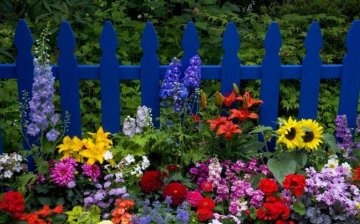
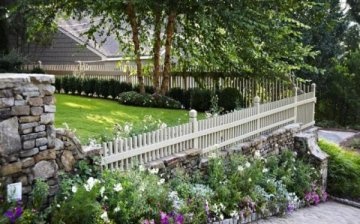
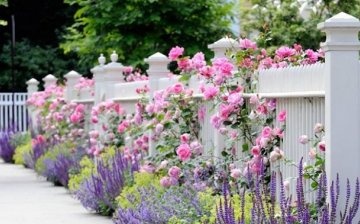

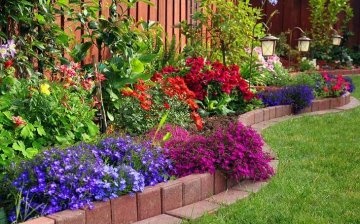









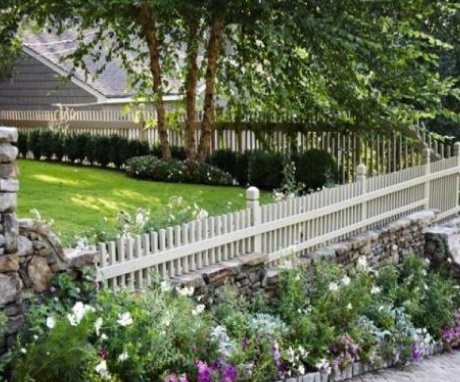
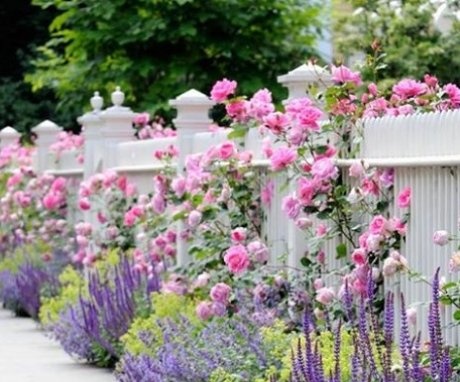
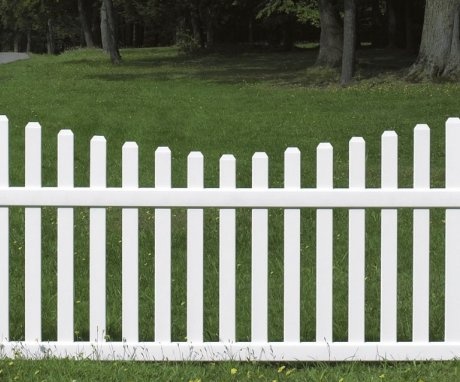
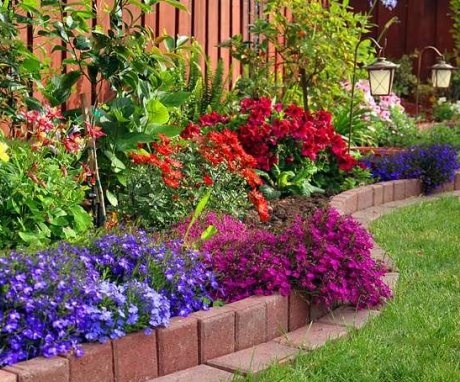
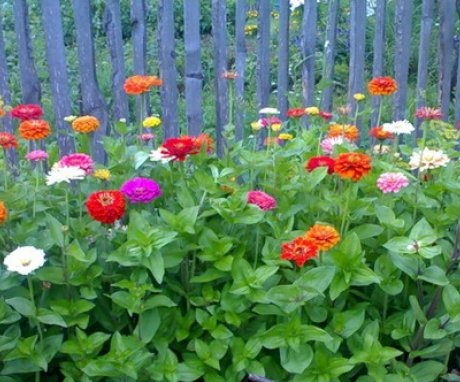
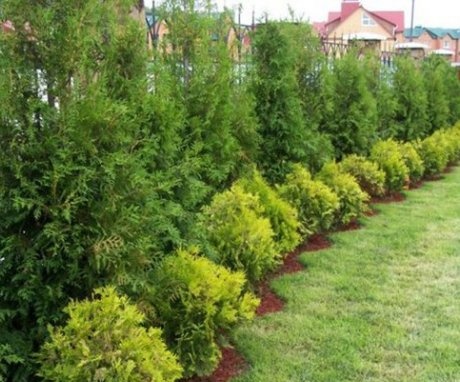
We planted such mixborders last year, however, we did not know the name of this yet. We bought several bags of seeds of different colors. The flower bed turned out to be very beautiful, there were marigolds, a rose stock and a few more flowers, I no longer remember the name.